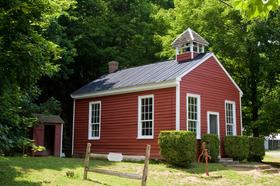Cypress Juvenile Residential Facility ranks in the bottom 50% of all schools in Florida for overall test scores (math proficiency is bottom 50%, and reading proficiency is bottom 50%).
The percentage of students achieving proficiency in math was <50% (which was lower than the Florida state average of 59%). The percentage of students achieving proficiency in reading/language arts was <50% (which was lower than the Florida state average of 56%).
School Overview
School Type
Grades Offered
Grades 6-12
(No virtual instruction)
(No virtual instruction)
Total Students (19-20)
29 students
Total Classroom Teachers (19-20)
3 teachers
School Rankings
Math Test Scores (% Proficient)
(18-19)<50%
59%
Reading/Language Arts Test Scores (% Proficient)
(18-19)<50%
56%
Student : Teacher Ratio
n/a
17:1
American Indian
(19-20)n/a
n/a
Asian
(19-20)n/a
3%
Hispanic
(19-20)7%
34%
Black
(19-20)52%
22%
White
(19-20)41%
37%
Hawaiian
(19-20)n/a
n/a
Two or more races
(19-20)n/a
4%
Eligible for Free Lunch (19-20)
90%
50%
School Statewide Testing
School District Name
Source: National Center for Education Statistics (NCES), FL Dept. of Education
Frequently Asked Questions
What percent of students have achieved state testing proficiency in math and reading?
<50% of students have achieved math proficiency (compared to the 59% FL state average), while <50% of students have achieved reading proficiency (compared to the 56% FL state average).
How many students attend Cypress Juvenile Residential Facility?
29 students attend Cypress Juvenile Residential Facility.
What is the racial composition of the student body?
52% of Cypress Juvenile Residential Facility students are Black, 41% of students are White, and 7% of students are Hispanic.
What grades does Cypress Juvenile Residential Facility offer ?
Cypress Juvenile Residential Facility offers enrollment in grades 6-12 (No virtual instruction).
What school district is Cypress Juvenile Residential Facility part of?
Cypress Juvenile Residential Facility is part of Okeechobee School District.
Recent Articles

Segregation in K-12 Education: Colonial Era
Explore the origins of educational segregation during the colonial era and the differential treatment of Native American, African American, and white students. This article delves into the historical context, policies, and societal attitudes that shaped early education in colonial America, highlighting the disparities and injustices that persisted within the schooling systems of that time.

2011 Classroom Size Update: Are Classes Still Growing Larger?
Since the recession, public school classrooms have seen major budget cuts - and many increases in class sizes. How is the situation in 2011? Read this article to find out.

Will Single Sex Classrooms Save ╬█╬█┬■╗ş Schools?
Learn about the benefits of single sex classrooms and why public schools are hoping this type of classroom will save the American school system.





